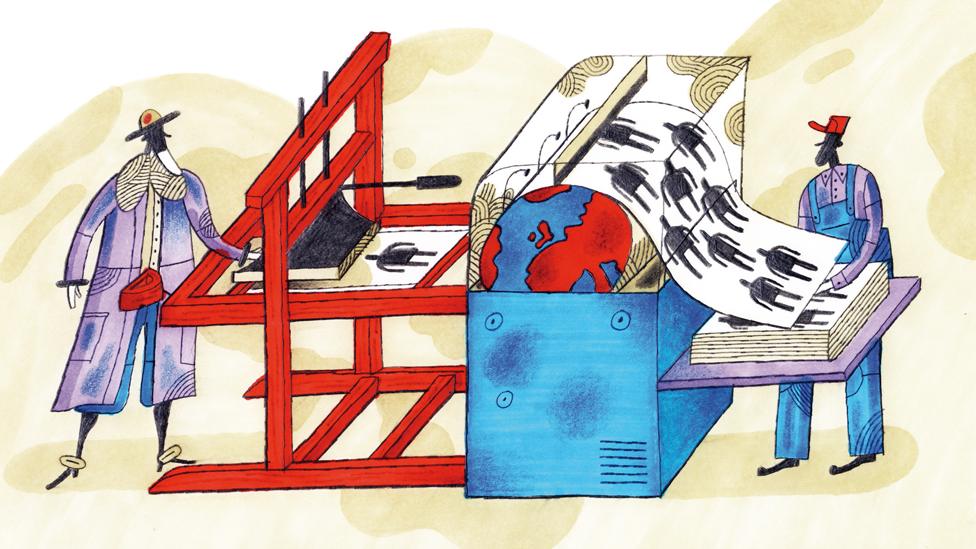The disruptive power of 3D printing
- Published
- comments

Manufacturing a brave new world, one plastic head at a time
Advocates of 3D printing say that small, in-home machines will allow tinkerers and makers to unleash a wave of creative energy, constructing whatever they can imagine, whether replacement shower curtain rings, works of art or even cars.
"The technology has not yet evolved to replace full manufacturing processes, but in its current nascent form it does cut down on prototyping, waste and transportation emissions - opening the door for more sustainable business practices across a range of industries," writes, external Chat Reynders of Reynders, McVeigh Capital Management for the Guardian's website.
Reason magazine's Greg Beato says, external the focus on the myriad uses of the technology, from the artistic to the mundane, ignores the larger picture: 3D printing has the potential to be a disruptive, possibly revolutionary invention.
What will happen, he writes, once millions of people are able "to make, copy, swap, barter, buy, and sell all the quotidian stuff with which they furnish their lives"?
It's the end of big-box stores - Bed, Bath & Beyond, for one. But more than that, it could also strike a blow to the heart of government (music to Beato's libertarian ears).
He explains how:
Once the retail and manufacturing carnage starts to scale, the government carnage will soon follow. How can it not, when only old people pay sales tax, fewer citizens obtain their incomes from traditional easy-to-tax jobs, and large corporate taxpayers start folding like daily newspapers? Without big business, big government can't function.
Beato contends that recent history shows that government will fight back. Just ask the online car-for-hire company Uber, which has struggled with taxi unions and local government approval in cities like Dallas and Seattle.
Over the past decade or so, as newer technologies and fewer opportunities for traditional employment have prompted more people to act in entrepreneurially innovative ways, government's response has been the same: Consumers must be protected against strawberry balsamic jam made in home kitchens. Tourists must be protected against immaculately maintained carriage houses that can be rented on a daily basis for below-hotel rates. Travellers must be protected from cheap rides from the airport.
There's a "dark side" to 3D printing, writes, external Lyndsey Gilpen of TechRepublic, and it's not just because the machines are "energy hogs" and possible sources of pollution.
"3D printers are still potentially hazardous, wasteful machines, and their societal, political, economic, and environmental impacts have not yet been studied extensively," she says.
There's a reason government has stepped in to regulate factories, after all. Unfettered manufacturing could have harmful consequences:
Weapons can be 3D printed. So can safety equipment such as helmets, wheels for bikes, and toys for small children. Of course there is the issue of intellectual property and trademark, but the larger issue involves responsibility.
If a person shoots a gun and harms or kills someone, stabs someone with a 3D printed knife, or breaks their neck while riding on a bike with a 3D printed helmet, who is held accountable? The owner of the printer, the manufacturer of the printer, or the irresponsible person who thought it was a good idea to produce and use an untested product?
3D printing is clearly one of the Next Big Things. Should politicians and CEOs be worried?
- Published11 October 2013
